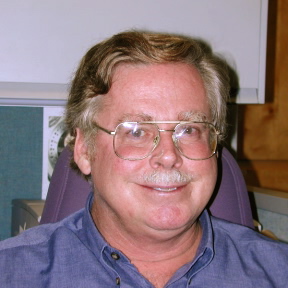A Statement from the VNL Director
 The US, along with Europe, Japan, and other developed
countries, are facing increasing long-term concerns about the
rising cost of energy, environmental impacts of fossil fuel
burning (global climate change), and now a renewed concern
due to dependence on imported oil, mainly from the Middle
East. Fusion is potentially one of the most efficient of all
processes that release energy without emission of greenhouse
gases, and fusion fuel (the hydrogen isotopes deuterium and
tritium) can be readily obtained in all countries. Unlike
fission of heavy elements like uranium that generate
long-lived radioactive waste, the essential byproducts of
fusion - helium - is naturally occurring, and with proper
design and choice of materials, activation of the fusion
chamber can be minimal and short lived. Controlled fusion on
a power-plant scale will require years of further
development. Typical estimates expect practical application
of fusion energy by the middle of this century. This
development time for fusion is consistent with expected
depletion of readily available reserves of oil and natural
gas.
The US, along with Europe, Japan, and other developed
countries, are facing increasing long-term concerns about the
rising cost of energy, environmental impacts of fossil fuel
burning (global climate change), and now a renewed concern
due to dependence on imported oil, mainly from the Middle
East. Fusion is potentially one of the most efficient of all
processes that release energy without emission of greenhouse
gases, and fusion fuel (the hydrogen isotopes deuterium and
tritium) can be readily obtained in all countries. Unlike
fission of heavy elements like uranium that generate
long-lived radioactive waste, the essential byproducts of
fusion - helium - is naturally occurring, and with proper
design and choice of materials, activation of the fusion
chamber can be minimal and short lived. Controlled fusion on
a power-plant scale will require years of further
development. Typical estimates expect practical application
of fusion energy by the middle of this century. This
development time for fusion is consistent with expected
depletion of readily available reserves of oil and natural
gas.
The US Department of Energy (DOE) supports two major fusion-research programs, one based on magnetic confinement of large volumes of low-density fusion fuel, the other on inertial-confinement of small, high-density targets of the same fuel. Heavy-Ion Fusion (HIF), the form of inertial-confinement fusion favored by DOE for energy production, uses beams of heavy ions from an accelerator to heat and compress, or "drive," a target. The resulting burst of energy is contained, captured, and converted into heat in the target chamber. WIth a beam-energy input of 4 megajoules delivered in a 10-nanosecond pulse (400 terawatts of beam power), designs for HIF targets predict fusion energy yields of about 200 megajoules. DOE supports HIF as the most promising form of inertial fusion because accelerators, building on decades of development and operation of sophisticated accelerators for high energy and nuclear physics, can be reliable, efficient, have a high pulse repetition rate, and long life (about 30 years).
The US HIF program has spent more than 20 years moving toward such an accelerator. The Single-Beam Transport Experiment (SBTE), the Multiple-Beam Experiment (MBE-4), and the Scaled Final-Focus Experiment verified that beams of sufficient brightness could be transported, accelerated, compressed and focused at very low currents (<< 1 ampere). There are many scientific and technical challenges that remain before a practical HIF power plant can be realized. The main scientific challenge is to accelerate, compress and focus short bunches heavy ions at the much higher beam currents and peak-power levels required to drive targets, while preserving beam brightness (highly parallel motion of ions co-moving within the ion bunch) sufficient to focus onto targets of a few millimeter size. Another scientific challenge is to understand how the intense ion-beam pulses interact with low-density gas and plasma in the fusion chamber on the way to the target. A principle technical challenge is reducing the cost of such high-peak-power accelerators through innovative technology R&D. In support of these scientific and technical objectives, Lawrence Berkeley National Laboratory has signed a memorandum of understanding with Lawrence Livermore National Laboratory and Princeton Plasma Physics Laboratory to form a "Virtual National Laboratory" or VNL. The Heavy-Ion Fusion VNL promotes rapid progress through the technical-management integration of the partners' scientific staff, equipment, and experimental facilities.
The major goal of the HIF-VNL research program over the
next three years is to carry-out separate scientific
experiments in the injection, transport and focusing of
intense heavy ion beams at currents 100 times larger than in
previous experiments. Following those experiments, the next
step we aim for is an Integrated Beam Experiment (IBX), in
which we would study the evolution of beam brightness of one
or more beams at high current (~ 1- 10 amperes) through,
injection, acceleration, compression and focusing (a
"source-to-target" experiment, if you will). In the longer
term following the IBX, we envision the construction of an
Integrated Research Experiment (IRE) for multiple
driver-scale beam dynamics and focusing experiments with
enough total beam power to study beam target interactions.
The results from the IRE, together with target physics
results from the DOE Defense Programs inertial-confinement
fusion program and research on other inertial fusion
technologies, will enable an informed decision about the
promise of heavy ion fusion. The information from the IRE and
the other programs will also provide a basis for the later
construction of an Engineering Test Facility. The Engineering
Test Facility will be designed to produce high levels of
fusion power (hundreds of megawatts).
Grant Logan, Program Director
Virtual National Laboratory for Heavy-Ion Fusion
For comments or questions contact WMSharp@lbl.gov or DPGrote@lbl.gov. Work described here was supported by the Office of Fusion Energy at the US Department of Energy under contracts DE-AC03-76SF00098 and W-7405-ENG-48. This document was last revised June, 2002.
